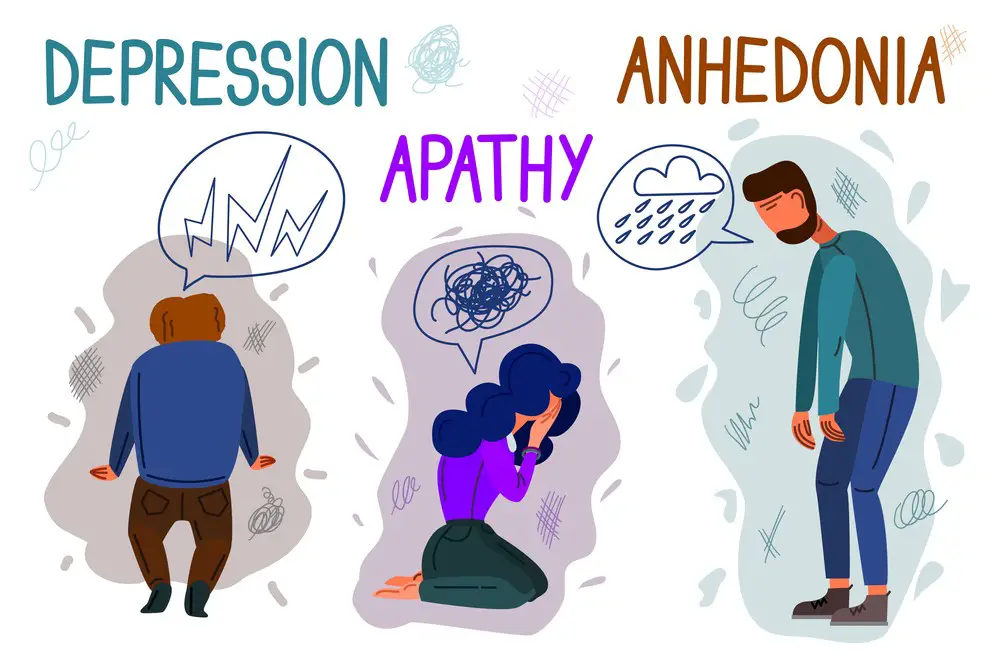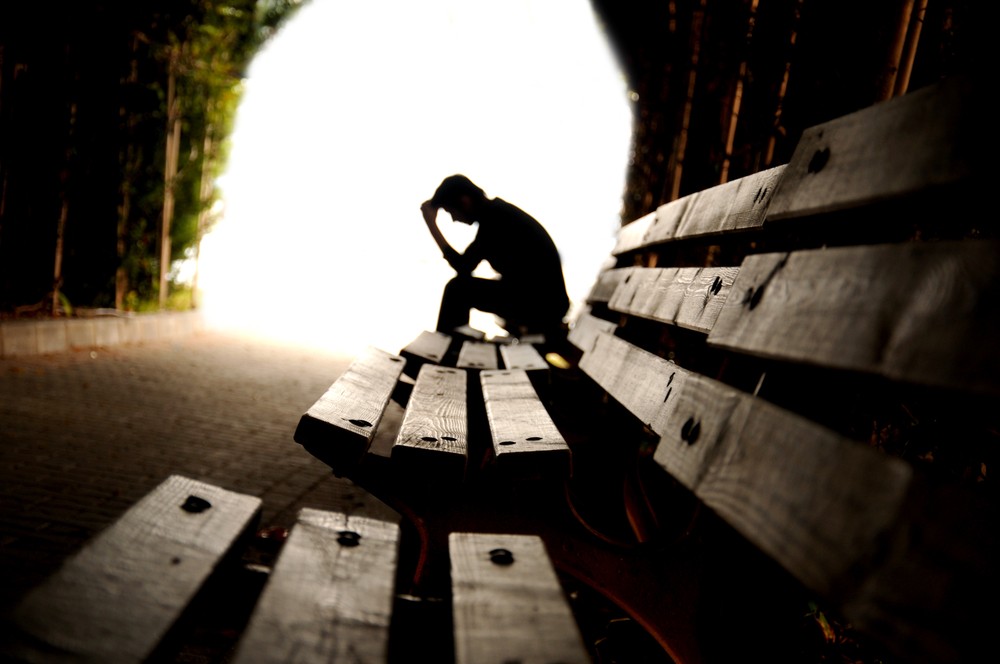Despair and depression though often used interchangeably to describe feelings of hopelessness and sadness, have important differences to recognize and understand. Identifying unique characteristics between the two and the potential overlap can help develop coping strategies and seek appropriate treatments. By exploring the nuances of both despair and depression, we can better grasp their impacts, along with their influence on mental health and daily life.
Despair often refers to a deep sense of hopelessness, which can arise from various circumstances, such as personal loss, financial struggles, or social isolation. It can manifest as an emotional state unrelated to a mental health disorder. On the other hand, depression is a clinical term used to identify a mental health disorder with specific symptoms and diagnostic criteria. Depression’s impact on an individual’s moods, thoughts, and behaviors can be long-lasting and far-reaching, presenting challenges in various aspects of life.
Understanding the complexities of despair and depression allows for improved communication, effective coping mechanisms, and targeted treatments. With a clearer view of their distinctions, as well as where they intersect, both individuals and mental health professionals can take steps to provide appropriate support and resources.
Key Takeaways
- Despair often signifies an emotional state, while depression is a diagnosable mental health disorder.
- Recognizing the differences and overlap between despair and depression can inform coping strategies and treatments.
- An improved understanding of these complexities can benefit individuals and mental health professionals in providing appropriate support.

Understanding Despair
Origins and Meaning
Despair is a complex emotional state characterized by hopelessness, frustration, disappointment, and deep loss. It can trigger various life events and circumstances, such as setbacks, failures, or unfulfilled expectations. Often, it is not just a momentary state but a prolonged experience that can lead to significant suffering and impairment in an individual’s life.
Erik Erikson, a renowned psychologist, mentioned despair as one of the last stages of psychosocial development. According to his theory, individuals may experience despair when they look back on their lives with regret or feel a lack of accomplishment. This can lead to a crisis in their sense of identity and a profound feeling of despair.
Connection with Emotions
Despair is often closely linked with anguish, disappointment, and sadness. These emotional states can feed off one another, intensifying the overall experience. For instance, when people lose faith in their hopes and dreams, they might be consumed by frustration and disappointment, leading to an overwhelming feeling of despair.
Scientists have found connections between despair and factors such as beliefs, sense of purpose, and motivation. An individual who experiences despair may struggle with accepting their situation and might be unable to develop an optimistic view of the future. This emotional state can impact their beliefs about their capabilities and the meaning of their existence.
Here are some ways despair can affect an individual’s emotional well-being:
- Loss of hope: In despair, individuals may feel a profound sense of hopelessness and pessimism, making it difficult to envision a positive future.
- Low motivation: Despair can sap a person’s motivation and energy, leaving them stuck and unable to make positive changes.
- Negative emotions: Despair often brings a range of negative emotions, such as sadness, anger, and frustration, adding to the individual’s emotional distress.
While despair can be a difficult and painful experience, understanding its origins and connection with other emotions can help individuals better navigate these challenging times. By recognizing the role beliefs and sense of purpose play in despair, one can work towards finding acceptance, building resilience, and developing a more hopeful outlook on life.

Exploring Depression
Basic Concepts
Depression is a common mental health issue that affects millions of people worldwide. It is characterized by persistent sadness, low mood, and loss of interest in activities once enjoyed. Depression can cause emotional and physical symptoms, significantly impacting daily life.
Causes and Symptoms
Depression’s underlying causes are multifaceted and may include neurological imbalances, genetic factors, environmental stress, or a combination of these elements. Serotonin, a neurotransmitter responsible for maintaining mood balance, is often vital in depression development.
Some of the commonly observed symptoms of depression include:
- Persistent low mood or sadness
- Loss of interest in activities once enjoyed
- Irritability or anxiety
- Negative thoughts and feelings of hopelessness
- Physical symptoms such as fatigue, appetite changes, and sleep disturbances
Various Forms of Depression
There are different forms of depression, each with unique characteristics and symptoms. Some of the most common types of depression include:
Major Depressive Disorder (MDD): This debilitating disorder is characterized by severe depressive symptoms that interfere with an individual’s ability to function in daily life. MDD typically presents with persistent low mood, feelings of worthlessness, and indecisiveness.
Persistent Depressive Disorder (PDD): Formerly known as dysthymia, PDD is a chronic form of depression marked by long-lasting, less severe symptoms. People with PDD often suffer from low self-esteem, hopelessness, and poor concentration.
Bipolar Disorder: Previously known as manic-depressive illness, bipolar disorder is a mental condition characterized by periods of depression and mania or hypomania. During depressive episodes, individuals may experience severe low mood, lethargy, and loss of interest in activities they typically enjoy.
Generalized Anxiety Disorder (GAD): Although primarily an anxiety disorder, GAD can coexist with depressive symptoms, leading to a challenging diagnosis. GAD sufferers typically experience excessive worry, agitation, and physical tension alongside their depressive symptoms.
In conclusion, depression is a complex mental health issue with various forms and symptoms. Recognizing the different types of depression and their unique characteristics is crucial for proper diagnosis and treatment. Mental health professionals, including psychologists and psychiatrists, are equipped to help people struggling with depression lead healthier, more fulfilling lives.

Critical Overlaps
The Interplay of Despair and Depression
Despair and depression, while distinct, often interact, leading to a complex relationship between the two. Despair may trigger or deepen depression, as individuals experiencing despair may find themselves overwhelmed with feelings of worthlessness, detachment, and an inability to shake negative thoughts. Conversely, those suffering from depression can also be susceptible to despair, as their low energy levels and persistent sadness may lead them to question their place in the world and their ability to achieve happiness.
Effects on Thoughts and Actions
Both despair and depression can significantly impact an individual’s thoughts and actions. Negative thoughts, such as those involving worthlessness and thoughts of death, are common markers for both conditions. The influence of such thoughts can lead to noticeable changes in the individual’s behavior, as they may become more withdrawn, detached, or apathetic toward previously enjoyable activities.
In addition, the combination of despair and depression often leads to decreased energy and motivation. This can make it difficult for individuals to fulfill daily tasks or engage in activities they once found meaningful. As a result, they may also experience a loss of freedom, feeling as though they are trapped in their current state without the ability to break free.
The emotional turmoil experienced by those caught in despair and depression can significantly affect their desires and decision-making processes. For some, they may experience a pull toward actions that are far removed from their previous values or convictions. This can manifest in various ways, from disconnection from social relationships to more damaging behaviors that put the individual at risk.
In summary, the critical overlaps between despair and depression involve a deep interplay between the two conditions, often exacerbating each other’s impact on an individual’s thoughts and actions. Recognizing and addressing these connections is crucial in helping those affected navigate these challenges and work toward a healthier state of being.
Impact on Daily Life
Work and Family
Despair and depression can significantly impact a person’s work and family life. Individuals experiencing these emotions may find it challenging to perform their job duties, leading to reduced productivity and possible job loss. Relationship stressors, such as arguments with loved ones or neglect of family responsibilities, can further compound these difficulties.
In some cases, work-related stress and dissatisfaction can trigger feelings of despair or depression. Individuals need to recognize these emotions and communicate with their support system to find healthy coping methods.
Physical Health
The impact of despair and depression on physical health can be significant. Affected individuals may experience sleep disturbances, decreased energy levels, and changes in appetite, contributing to deteriorating health. These emotional states can also heighten one’s perception of physical pain, exacerbating existing conditions.
Furthermore, some individuals may turn to unhealthy coping mechanisms such as alcohol or drugs, which can significantly impair their physical well-being in the long run. Seeking professional help and adopting healthier lifestyle habits can help alleviate these adverse effects on physical health.
Emotional Well-being
Despair and depression can severely compromise one’s emotional well-being. These states often manifest as persistent sadness, hopelessness, and an inability to experience joy. This emotional turmoil may lead to social isolation, making it challenging for individuals to maintain quality connections with friends and family.
Maintaining emotional well-being is vital for overall quality of life. Individuals experiencing despair or depression should not hesitate to seek support from trusted individuals or mental health professionals. Self-care activities and mindfulness techniques can also help enhance emotional resilience.

Treatment and Support
Professional Therapies
Professional therapy can be vital in addressing despair and depression. Psychotherapy offers a safe space for individuals to address their traumas, motivations, and connections with a skilled therapist. For example, cognitive Behavioral Therapy (CBT) focuses on understanding thoughts and behaviors that may contribute to feelings of despair. Other forms of therapy, such as Dialectical Behavioral Therapy (DBT) and Acceptance Commitment Therapy (ACT), could also be helpful. These approaches emphasize the importance of acceptance, mindfulness, and healthy coping strategies to achieve emotional balance.
Self-Care
In addition to professional therapies, self-care is essential in managing despair and depression. Individuals must prioritize their well-being and practice self-compassion. Some self-care activities include:
- Engaging in regular physical activity, as exercise can boost mood and improve overall health
- Ensuring a well-balanced diet to maintain stable energy levels and improve appetite
- Practicing mindfulness or meditation to increase mental clarity and reduce negative thoughts
- Setting aside time for hobbies and activities, providing an opportunity to experience joy, and maintaining motivation
Lifestyle Changes
Last but not least, adopting lifestyle changes can greatly impact one’s ability to manage despair or depression. Building strong connections with supportive friends and family can provide much-needed emotional support. Additionally, these changes can contribute to an overall healthier life:
- Establishing a consistent sleep schedule to ensure restorative rest and maintain mood stability
- Limiting alcohol and drug consumption, as these substances can exacerbate feelings of despair or depression
- Seeking out support groups or community resources for individuals experiencing similar feelings, which can promote feelings of understanding and connection
Remember that seeking treatment and making the necessary changes takes time and effort. However, with dedication and support, it is possible to overcome both despair and depression.
Conclusion
In mental health, it’s crucial to differentiate between despair and depression. Both might present similar symptoms, but their underlying causes and subsequent treatment methods may vary.
Despair is a reactive emotion triggered by an external event or an unresolved internal conflict. It often arises from feelings of hopelessness, fear, or loss but may dissipate as the situation changes or the individual learns to cope with their circumstances.
On the other hand, depression is a clinical mental disorder with extensive symptoms that adversely affect a person’s daily life. It is characterized by persistent sadness, lethargy, and disinterest in previously enjoyed activities. Depression can be brought on by genetic, biological, or environmental factors, and treatment may involve a combination of therapy and medication.
Both individuals and professionals must recognize the differences between despair and depression. By doing so, they can address the appropriate issue and provide effective support and treatment. Early intervention and accurate diagnosis are paramount in helping people overcome difficult emotions and achieve better mental well-being.
Frequently Asked Questions
What is the difference between despair and depression?
Despair is intense hopelessness, often linked to specific situations or triggers. It is a normal human emotion experienced during challenging times. Depression, on the other hand, is a persistent mental health disorder characterized by a pervasive sense of sadness, low mood, and loss of interest in activities. Depression often impacts daily functioning and may not have an identifiable cause.
How can despair be distinguished from depression?
While both despair and depression involve sadness and hopelessness, key differences exist in their duration, triggers, and impact on daily life. Despair is usually a temporary emotional response to a difficult situation, whereas depression is a longer-lasting mental health condition, often requiring professional treatment. Additionally, despair is typically linked to specific triggers, while depression can occur without a clear cause.
What causes despair, and how does it differ from depression?
Despair is usually caused by external circumstances such as personal loss, unachieved goals, or difficult relationships. It is a natural response to challenging situations and typically subsides once the situation improves. Depression, however, is caused by a complex interplay of genetic, biological, and environmental factors. It may not have an identifiable cause and can persist even if external circumstances improve.
How do the treatment options for despair and depression vary?
Despair is often resolved through emotional support, problem-solving strategies, and coping techniques. It may not require professional treatment since it is a natural emotional response. However, depression is a mental health disorder that typically needs medical intervention, including psychotherapy, medication, and lifestyle changes. A combination of treatments is often most effective for managing depression.
What are the signs of despair compared to those of depression?
Despair may present as intense sadness, hopelessness, or a lack of motivation related to specific circumstances. It is temporary and generally improves once the trigger is resolved. Depression is characterized by persistent low mood, lack of interest, fatigue, and disturbed sleep or appetite. These ongoing symptoms often interfere with daily functioning, making it difficult to carry out normal activities.
How can one cope with despair as opposed to depression?
Coping with despair may involve emotional support, self-care, and addressing the triggers causing the feelings of hopelessness. Strategies such as talking to loved ones, journaling, or practicing mindfulness can help manage emotions during difficult times. For depression, professional help is often needed, including therapy, medication, and lifestyle adjustments. Engaging in self-care activities, maintaining social connections, and seeking support from loved ones can also help manage depressive symptoms.
- Emotional Support Goat: A Guide to Healing Companions - February 14, 2024
- Alteril Sleep Aid: Your Trusted Solution for A Peaceful Night’s Sleep - February 14, 2024
- Is It OK to Put Baby to Sleep Without Burping? Unveiling the Facts - February 13, 2024
This site contains affiliate links to products. We will receive a commission for purchases made through these links.




